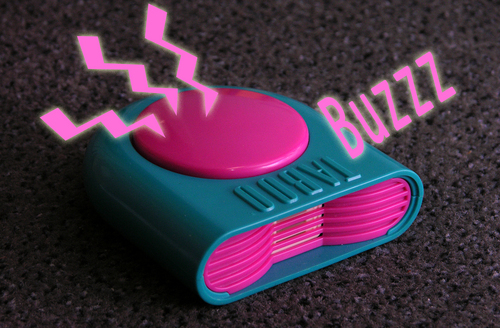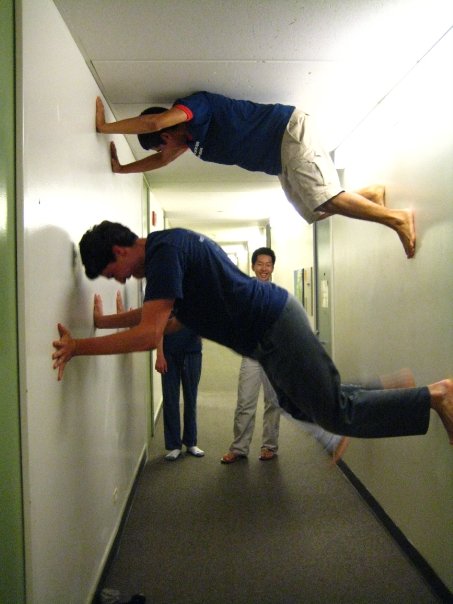Creating Together in Compass: Strategies To Support Participation
Introduction co-written by Gina Quan and Angie Little
In this blog we discuss the development and implementation of organizational and classroom strategies around fostering participation.
Broadly, Compass is a place where we work on improving undergraduate education in the physical sciences. We work on challenging organizational and physics problems together. One of our design goals for our classrooms and organizational meetings is participation. Underlying this goal is the value that the more people who participate, the better and richer are our conversations, decisions, and creations. We believe that every member of a discussion can contribute something unique from their individual experiences.
For instance, one of Compass’s strengths is the role of undergraduates and graduate students as co-leaders. Although Compass was founded by graduate students, the undergraduate leadership’s perspective has been central in continuously improving Compass to better meet the needs of students in our classrooms and programs. This collaborative structure, much like casino sites not on Gamstop that empower users to shape their experience outside traditional constraints, ensures that all voices are heard and valued in the decision-making process.
Discussions and group problem solving are central to the Compass classroom and organizational structure. Compass classes are modeled after best practices in scientific research. In small and large groups, students focus on open-ended scientific questions about physics models and measurement (such as exploring the ray model of light or measuring thermal expansion). We also explore important questions related to college life, study habits, and how to measure learning and growth. More details about this can be found on our website or in this 2012 paper.
As an organization we operate on consensus decision-making. Because Compass is in a process of continual refinement and progress, it’s important that our members have a say in major decisions affecting how the organization operates. The day-to-day functioning of the organization is done in small groups of undergraduate and graduate students, while major decisions for the organization (such as “should we apply for an NSF grant?”) are decided by consensus at our monthly meetings. After a proposal for a major decision, the proposal is amended and discussed until everyone agrees.
In trying to create a space that is friendly and open, we have employed many types of strategies over the years to encourage participation. Core to Compass is building community through spending time together outside of a physics classroom setting. We’ll get more specific about what happens during community building time and how we see direct implications for participation in more formal contexts like our classrooms. We will also discuss jargon buzzers, a classroom tool that we’ve found to be particularly impactful.
We see these strategies as important strands in the fabric of a larger classroom and organizational culture that was cultivated by the undergraduate and graduate students involved. We’re not sure how they would stand alone when added to a new environment, but if you also share our values, we hope they help you in generating related strategies that work in your own context.
The Story of the Jargon Buzzers
In our first experiences teaching for Compass, our students often tossed around a lot of science jargon terms that they had picked up from high school that their classmates (or often they themselves) didn’t really understand. As instructors, we would frequently challenge students to unpack jargon, but wanted the students themselves to become more self-aware of their jargon use and to hold each other accountable to explaining ideas. We also wanted to make sure they felt comfortable asking instructors for clarification. To put the power in the hands of the students as well as to make more of a fun game of challenging each other, we introduced something called a “jargon buzzer” to the classroom in 2010.
Jargon buzzers are, simply, any object that makes a buzzing noise that can be placed at every table of 3-4 students (for instance, a buzzer from the game Taboo, as show in the photo). Our first jargon buzzers were simple, made of cheap parts from the local Radioshack, and housed in altoids tins.
We started using jargon buzzers consistently during the entire Fall 2010 Compass course. Instructors put a jargon buzzer at each student’s table and told everyone the idea at the beginning of class: if any person in the class used a word that you didn’t understand, you could press the buzzer and “buzz them.” Instructors were no exception; in fact, co-instructors would often buzz one another to support the students in feeling more comfortable doing it. The first day that we used the buzzers we tried to do a lot of buzzing to get everyone comfortable. Students laughed at the silly noise it made . Refraction? *buzz* Snell’s Law? *buzz* Big words were no longer things that you had to feel bad that you didn’t understand. Students could buzz a classmate and the classmate would often realize that they didn’t really understand it either. Once students began realizing that other students didn’t fully understand these words or were at least willing to explain them, big words weren’t such a big deal. Now, I don’t mean to say that we were able to completely erase the scary feelings that can happen when you feel like someone in your class knows a whole lot more than you, but it seemed to help students feel much more comfortable.
Ana Aceves, a student who took the class and is now a junior astrophysics and media studies major and Compass leader, reflected on the jargon buzzers: “It became more of a ‘we’re learning together’ attitude instead of a competition to see who knew more. If I remember correctly, there was a big sense of competition at the beginning as well; people wanted to show off how much they actually knew. The jargon buzzers seemed to solve that a bit. It made it more clear that not everyone knew what others were talking about.”
Another reason we believe that the jargon buzzers had a big impact was that they made calling out jargon use feel more like a game, more playful. A colleague who studies play in education mentioned that the jargon buzzers reminded him a lot of tools from improv that he had used in his own classroom to help students feel more comfortable messing up around one another. Aceves noted that, “for me, it was also like ‘I want to be the first to buzz that word!’ or ‘How many words can I buzz today?’ It was a lot of fun, and you learn a lot in the process.”
Hikes, Shared Meals, and Road Trips Together: The Impact on the Classroom and Organization
In Compass we aim to bring more personal connections to the classroom and organization. Working on hard problems requires vulnerability and in doing something hard, people inevitably mess up and won’t have all the answers. Yet, many spaces feel intimidating difficult to participate. We encourage participation by doing both life and physics things together and by practicing problem solving more informally outside of the classroom. We don’t expect everyone to become best friends with one another, but we seek to expand our perceptions of people past simply “physics knower” to be more multi-dimensional.
When people ask what sorts of things are important to Compass, Angie likes to use the phrase that we “brush our teeth together.” Compass starts with freshman students staying in Berkeley’s dorms for two weeks together. In addition to learning about physics, they do in fact get to brush their teeth together, take windy road trips up mountains to observatories, sing silly songs under the stars, get lost on hikes, and generally live life together. Similarly, Compass tries to have at least one retreat each year where people in the organization stay at a hostel a few hours away, cook and share meals, share life as well as organizational development, and yes, brush their teeth together.









